As an Amazon Associate I earn from qualifying purchases.
Chances are if you are familiar at all with Mexican mole, you are thinking of the dark, chocolatey sauce known as mole poblano, which is, arguably, the national dish of Mexico. Mole coloradito is not that mole.
Nope, this is a lighter, brighter, easier mole (pronounced “mole-ay”) that is from Oaxaca, where mole is king. Mole coloradito, if you understand Spanish, means “little red mole,” and it is indeed different from mole colorado; colorado is a color, not a state, in Spanish.
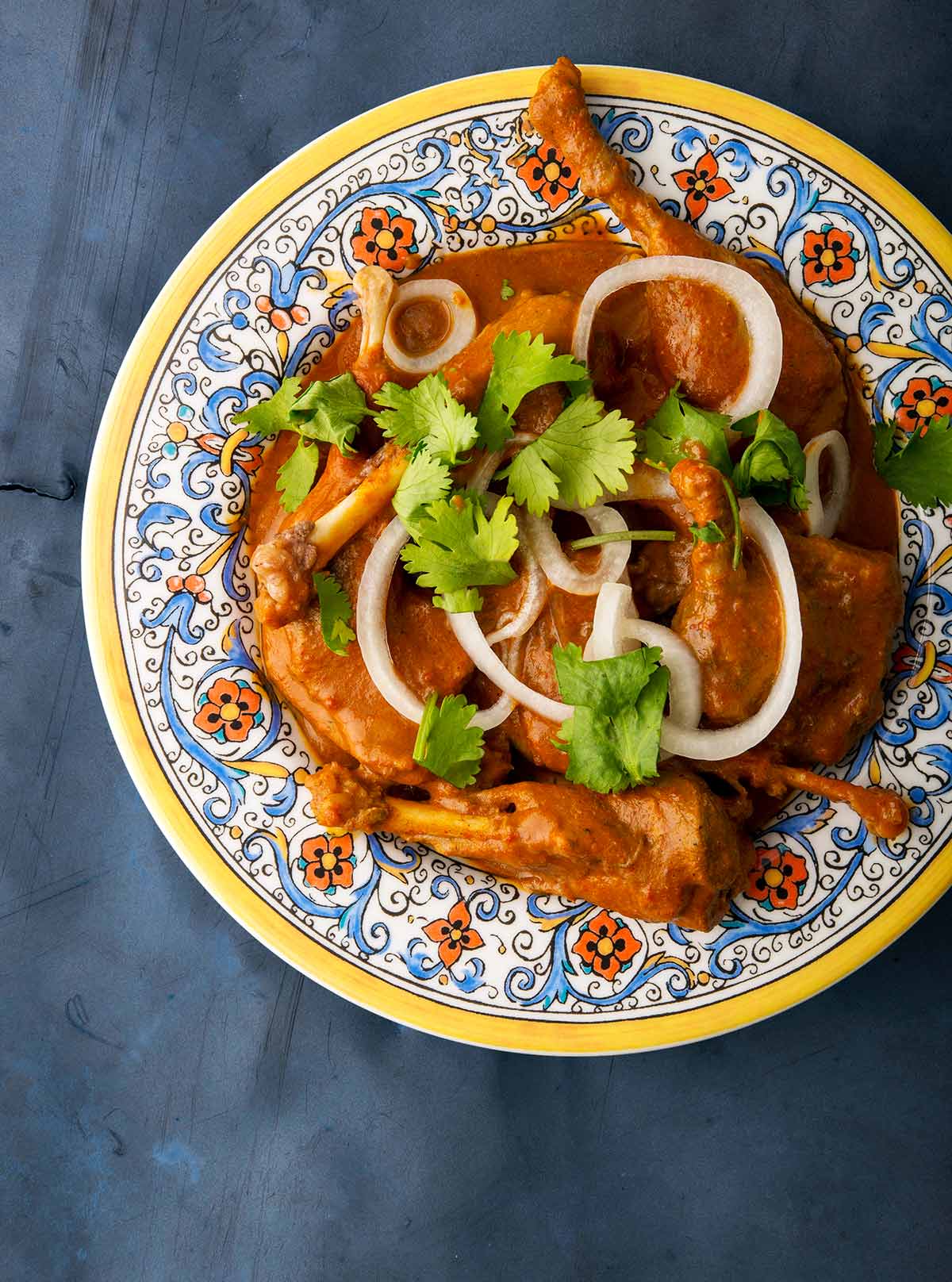
I like this mole because unlike my recipes for mole negro and mole chichilo, there are fewer ingredients and the end result is lighter, more approachable — dare I say, more fun? The other moles are amazing, but a definitely more dramatic.
If you want a quick primer on all the various moles, start here, and here.
Fun fact: Peoples from what is now Mexico are the first to domesticate the Muscovy duck. So you can find quite a number of ancient duck recipes if you look. Along those lines, I decided to pair my mole coloradito with Mexican ducks. Seems fitting, eh?
What is a Mexican duck? Well, it is Anas diazi, a variant on a mallard that lives all over Mexico as well as our border with Mexico. Holly and I got a few on a recent trip to Arizona.

And yes, that is indeed the border fence! We just had to take a photo of Mexican ducks on the Mexican border.
In the kitchen, a Mexican duck is basically the same as a mallard. And don’t get all hung up on using wild ducks or even duck at all with your mole coloradito. I’ve seen it paired with chicken, turkey, pork and even beef, although beef is unusual.
There are a few ways to eat your mole coloradito. Simplest is to just use it as a salsa for tortilla chips. Yes, really. It’s damn good that way. Most traditionally, you would simmer whatever thing you are eating with the mole in the sauce itself. I don’t love this because I find that it overcooks the mole.
Better is to cook your thing — in this case duck legs and wings — in a nice broth (even store-bought chicken or vegetable broth is fine) and then coat it with mole coloradito, garnish with some cilantro and pickled onions and call it a day.
Why? Because this keeps the flavors bright and happy.
Once made, mole coloradito will keep in the fridge for several weeks, and it freezes really well. That means you can make it on a weekend, then cook whatever you feel like during the week, coat it in warmed up mole, and have a remarkable meal on a weeknight.
Or, hell, do that thing with the tortilla chips and eat mole in front of the TV.
Mole Coloradito
Ingredients
DUCK
- 2 to 3 pounds duck legs and wings (or chicken or turkey)
- 1 quart chicken or duck broth
- 3 bay leaves
- 2 ribs celery, chopped
- 1 carrot, chopped
- 1 onion, chopped
- 2 hot, dried chiles, broken up (optional)
- Salt
MOLE COLORADITO
- 10 dried guajillo chiles, stemmed and deseeded (or New Mexican or California chiles)
- 1/2 cup sesame seeds
- 12 whole black peppercorns
- 8 whole cloves
- 4 bay leaves
- 1 teaspoon dried thyme
- 1 teaspoon dried oregano, Mexican if possible
- 1 teaspoon ground cinnamon
- 1 small white or yellow onion, chopped
- 6 cloves garlic, chopped
- 1/4 cup blanched almonds
- 1/4 cup raisins (golden, if possible)
- Broth or stock (see below)
- Salt
- 2 hoja santa leaves (optional)
- 1/4 cup lard or duck fat
- 2 pints pureed tomatoes, fire-roasted if possible
- 1 3-ounce tablet of Mexican chocolate, grated
GARNISH
- 1/4 cup roughly chopped cilantro
- 1/4 cup lime juice
- 1 small white onion, sliced into rings
Instructions
DUCK
- Put the duck and the broth, plus another quart or even two of water into a large, lidded pot and bring to a simmer. Add the remaining duck ingredients and salt to taste, then simmer, partially covered, until the meat is tender, but not falling off the bone. This usually takes 2 to 3 hours.
MOLE COLORADITO
- Soak the onion slices in the lime juice to make a quick pickle. Set this aside for now.
- Meanwhile, make the mole. Start by setting the stemmed and seeded guajillo chiles into a bowl. Pour boiling water over them to cover, and then cover the bowl to let them steep for 30 minutes.
- While that is happening, put the sesame seeds in a small frying pan and toast on high, tossing often, until they brown just a little. Keep an eye on them because sesame seeds can burn easily. Move to the bowl of a blender.
- Using the same small frying pan, toast the peppercorns and cloves until aromatic. Move to a spice grinder and grind with the bay leaves, dried thyme and oregano, until mostly powdered. Add this to the bowl of the blender along with the cinnamon.
- Add the chopped onion and garlic to the blender, along with the soaked chiles, and the blanched almonds and raisins. Add the hoja santa leaves if you have them. Blend until smooth. You will need broth for this or the blender won't spin right. You can take some from the duck pot, or use chicken broth. Most times I find I need at least a pint, sometimes more. Add salt to taste before you take the sauce from the blender.
- Heat the duck fat or lard in a large, lidded pot over medium heat. Add the contents of the blender, plus the pureed tomatoes, and stir well. It will sputter at first, then emulsify. Simmer this 10 minutes, then stir in the grated Mexican chocolate. Simmer this very gently for 30 minutes to 1 hour. It should finish with the consistency of melted ice cream.
- To finish, remove the duck from its pot and put in a bowl. Toss with a ladle of the mole. Give everyone some duck, add some more mole, and garnish with chopped cilantro and the lime-soaked onions.
Notes
Nutrition
Nutrition information is automatically calculated, so should only be used as an approximation.


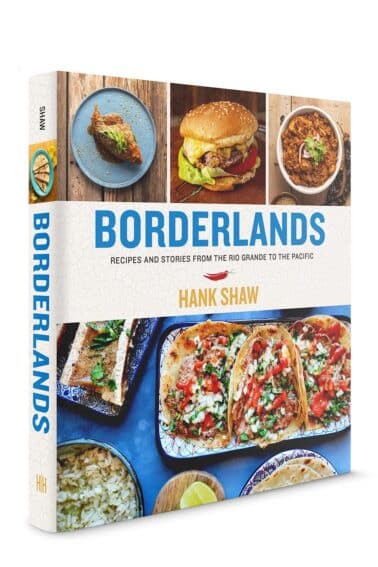
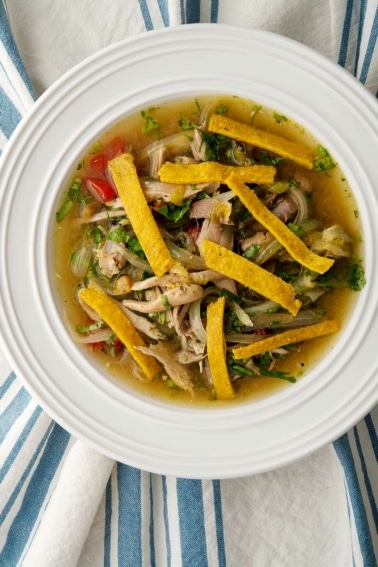
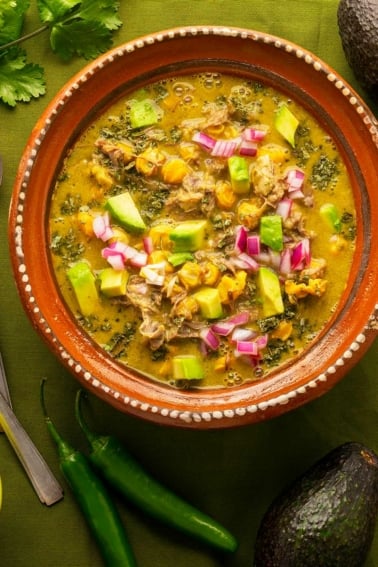
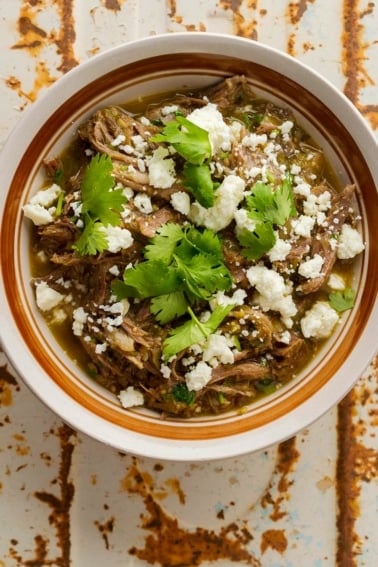
Can you use duck breast or just wings/legs
Urian: I prefer the legs, etc because they are nicer cooked a long time. If I made this with duck breasts, I might just sear the breasts like a steak, then sauce them with this mole after. I prefer my duck breast medium or medium-rare.
Coming up to a backyard holiday get together with one of our sons, his partner and staffy. It’s summer here. Australia. So thinking a barbecuey fish taco kind of day. (As a result of our Mexican adventures a few years ago – and that it’s a very chilaxed way to spend an afternoon!). My internet rabbit-holey research lead to your site. While it’s the wrong season here to go the full mol? – I will definitely go there come winter! I like your approach to food.
How imperative are the almonds here? as someone with a nut allergy i wonder how much it would affect the dish to leave them out.
Cole: Can you eat any sort of nut? You could sub out almonds for another. Like peanuts. Or, in a pinch, use sesame seeds.
Thanks! No nuts for me so it’ll be sesame seeds!
Hi Hank,
Just wondering what you choose to do with the duck broth after taking out the simmered duck legs. It sounds like it’ll be a rich, flavorful twice-simmered broth. Do you refreeze it for use in another recipe? Thank you for all the recipes!
Liam
Liam: Yes, I often strain and freeze it and use it multiple times, either for this recipe or similar ones.
Thank you! Quick follow up, is there a reason you choose not to sear the duck pieces before simmering them in the broth? Wouldn’t it give a richer flavor? Thank you again!
Liam: Yes. Because it’s not done in Mexico. I used to brown/sear everything before stewing or braising, as is the French tradition that has spread to much of Western cooking. Then I found some old Italian dishes that didn’t do this, then more and more in China, India and Latin America. The result is a cleaner, purer flavor of whatever it is, and the meat itself is often juicier without searing first. Nowadays I do whatever the tradition is for that particular dish.
I’m making this for Christmas dinner. There will be a selection of meats – duck, chicken, pork, and beef. I also made a double batch, and wonder if it would be possible to pressure can it? I’m running out of room in my freezers!
Laura: Yes, I think you should be able to as if it were “beef stew” in the guidebooks for pressure canning.
Make a double batch and freeze the second. The only alteration I’d do next time is to use ground sesame seed Tahini as my blender isn’t strong enough to purée them.
Excellent! I’ve made it today and enjoying it now. What a superbly tasty dish. My very first mole world adventure ever. Got all the ingredients as recommended, no substitutes. Thank you so much for sharing. What kind of drink would you recommend with this dish Hank?
Marzena: I usually drink beer with it, like Tecate or Negro Modelo or Carta Blanca.
This is similar to a Mole Poblano, excellent for wild duck or Turkey. Keep up the good work.
David: It is a lot less complex than mole poblano, and uses very different chiles. Each mole is a bit different from the other, and there are regional differences, too. This is from Oaxaca, and poblano is, as you might imagine, from Puebla.
awesome!
there was a great dive in East LA that had the absolute best molés ever, of all kinds–never thought i could make one, because they are all so complex, but i think i’ll be able to do this!
on the chocolate: is the mexican chocolate a milk chocolate or can i sub in regular good quality dark 100% chocolate..?
Tuffy: The Mexican chocolate is not milk chocolate at all. But yes, you can sub in that dark cacao chocolate.
Hank….
I had no idea that was a mole. I’ve been making 1/2 the recipe as a paste for my duck tacos or bbq chicken. Literally 1/2 the recipe, from the top to the garlic stopping there. Definitely going to add the rest of the ingredients and try it out. My aunt Leonila taught my wife and I her version of mole which is unreal but really a lot of work. We never make it. Thanks dude this will be awesome because I am already familiar with the base.
I’ve just made this, only the sauce, I’ll add meat at the weekend ( If there’s any left). I didn’t have all the chilli’s so I used what I had. Cascabel x2 Chipotle x4 and Guajillo x3. The other thing I used was Goose fat, again it’s what I had. It’s still simmering but I can’t stop going back to have a taste, it’s so delicious I can’t help myself. Love your recipes. Greetings from Scotland.
Hi Hank,
This recipe looks great and I’ll try it when I get back home to my blender.
Looks like you left the chillies steeping in the bowl? I know to put them in the blender but others may not.
I always enjoy your recipes.
Pete